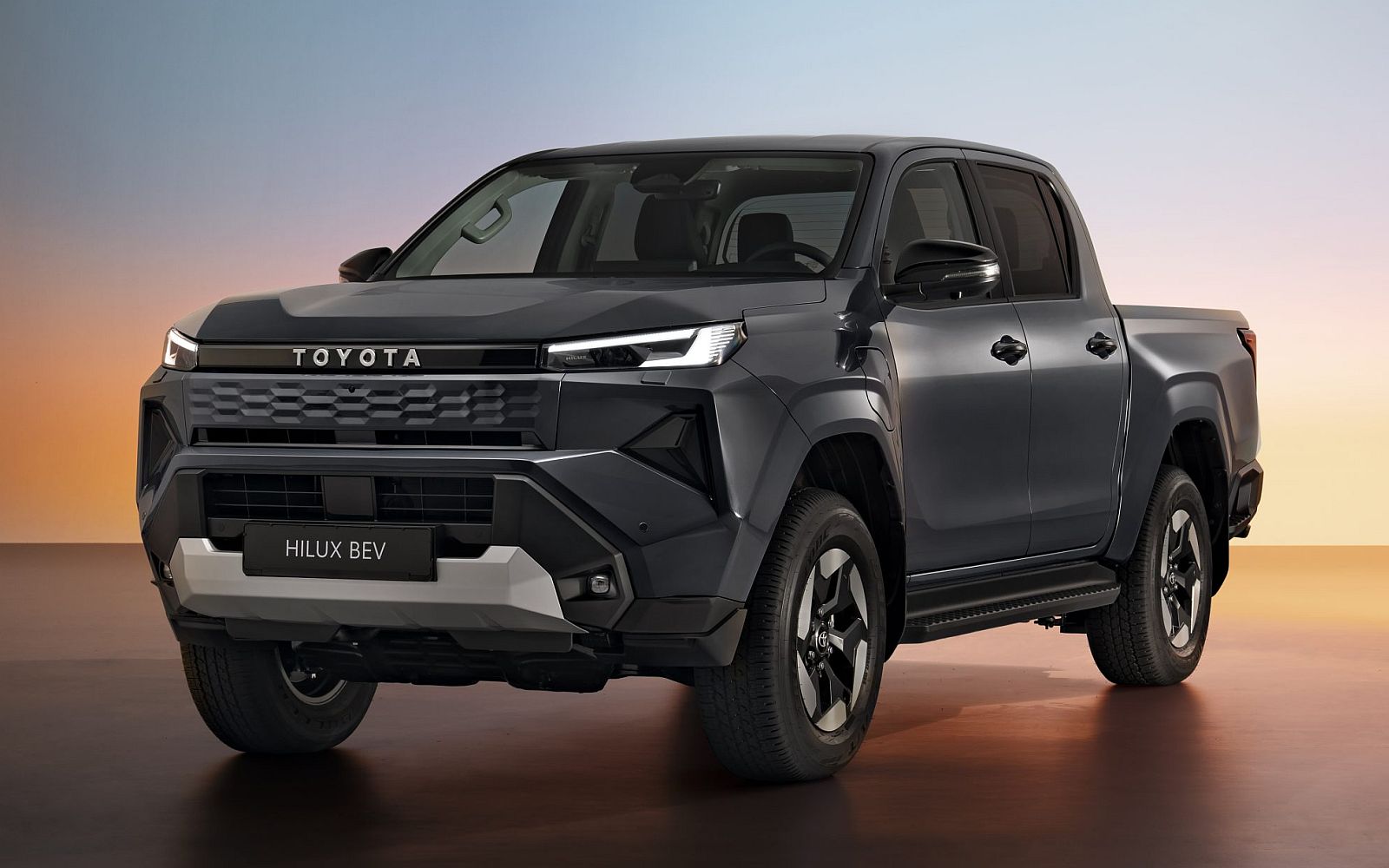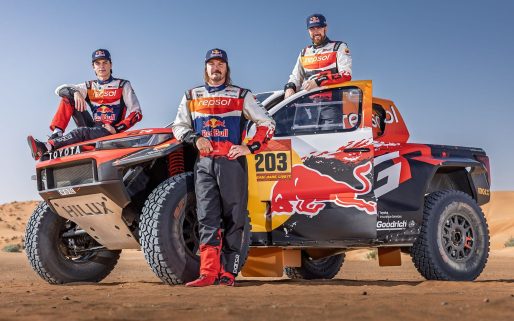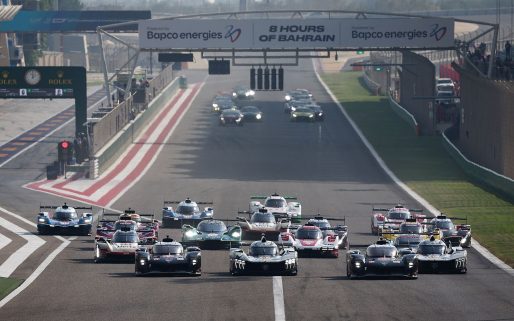The ninth generation Toyota Hilux takes our iconic pick-up into a new era of electrified power. It has become increasingly clear that different customer needs and local conditions cannot be addressed by a single powertrain solution. So the all-new Hilux introduces an exciting, multipath range that will include three electrified powertrain options for the UK market: mild hybrid, battery electric and hydrogen fuel cell. All are engineered to zealously maintain the model’s global reputation for strength, reliability and durability – qualities that have made it the world’s favourite pick-up.
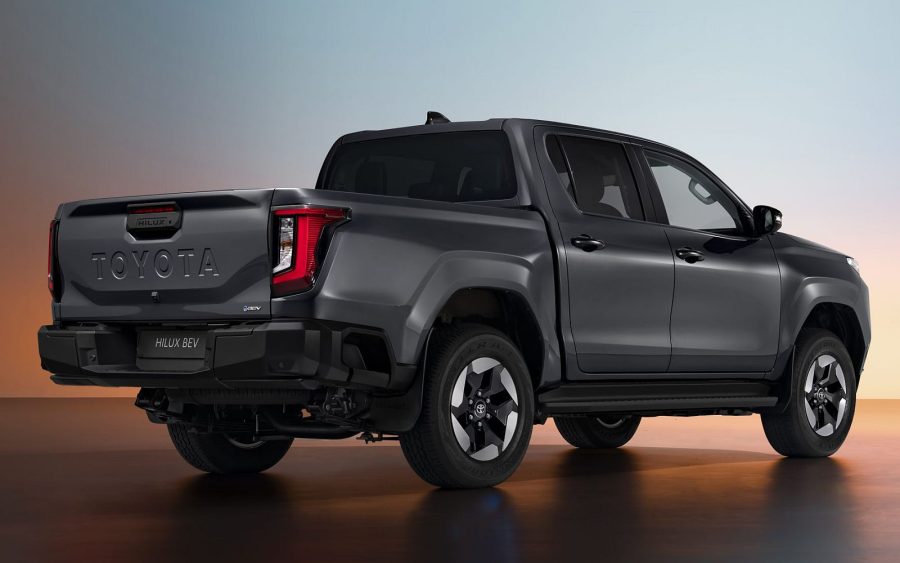
Model overview: design, handling and safety
The styling of the ninth generation Hilux was inspired by a new Tough and Agile theme. It projects this image through a front end that has redrawn proportions and a visibly strong stance. The frontal treatment includes slim headlight units linked by a central bar which carries the capitalised Toyota legend in classic style. On the battery electric model, the aero treatment deletes the traditional grille and features dedicated alloy wheels. Features for all models include a new rear deck step for easy access. Selected models also have a redesigned side step. In line with customer preference, the new Hilux will only be produced in Double Cab body style and all-wheel drive.
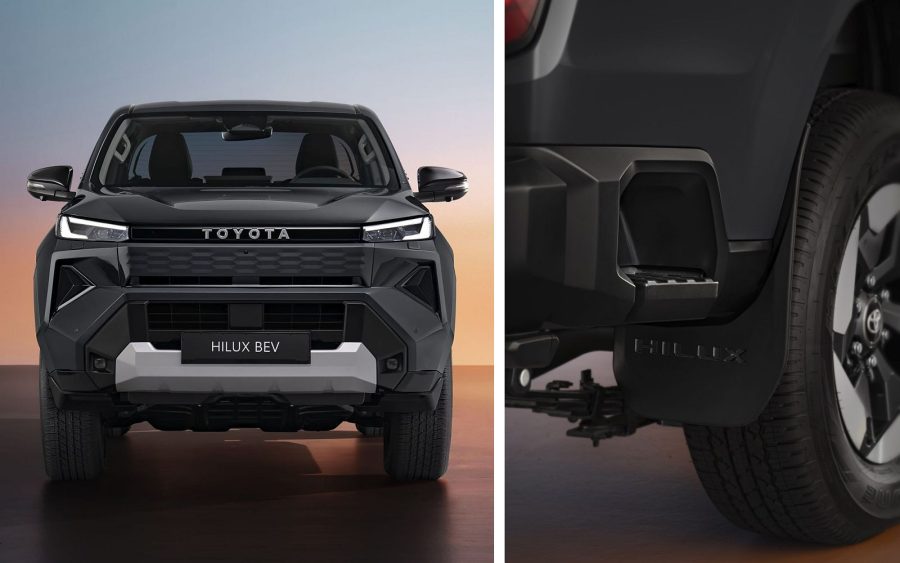
Meanwhile, the cabin design is strongly influenced by the new Land Cruiser and offers increased sensory quality. Depending on grade, the horizontally focused dashboard can incorporate a 12.3-inch customisable driver’s combimeter and equally large central multimedia touchscreen. Connectivity is also assured with the availability of wireless device charging and USB ports in the rear of the cab. Drivetrain controls are centrally grouped for ease of operation, and the battery electric model adopts a shift-by-wire drive selector.
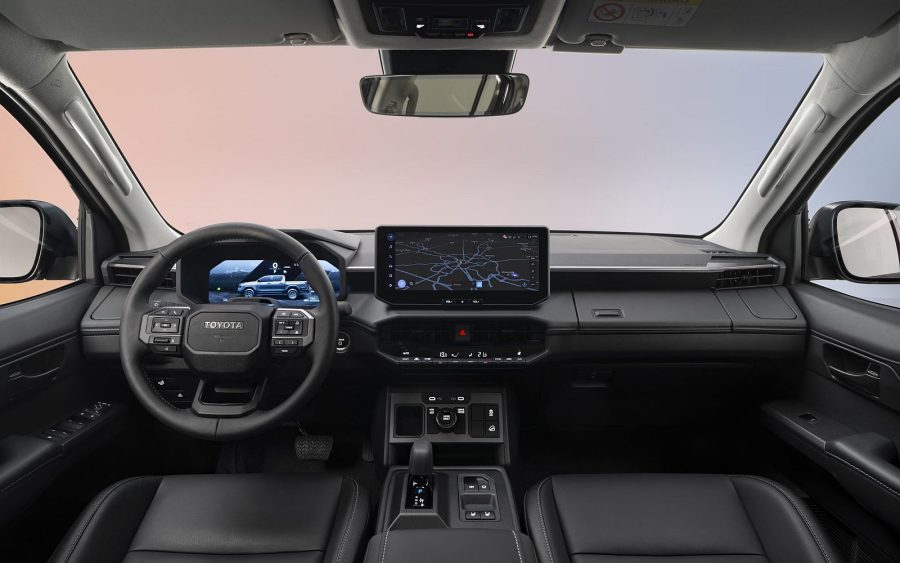
Owners will be able to access remote and connected services using the MyToyota app, which was developed to be convenient for both private and business customers. Fleet managers can view data from up to ten vehicles. This includes location, fuel level and EV charging status, together with driving analytics such as journey history.
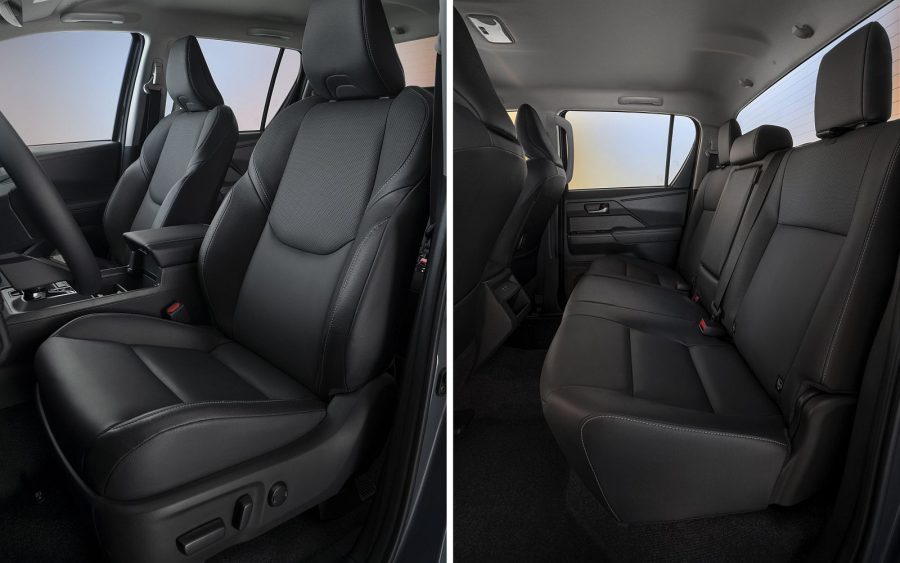
The ninth generation Hilux is the first to be equipped with electric power steering. This change offers more direct operation, easier manoeuvrability and reduced kick-back when driving over uneven ground. Similarly, the model’s active safety qualifications have been significantly extended with many new features built into the Toyota Safety Sense suite. Over-the-air updates will now provide seamless upgrades when available.
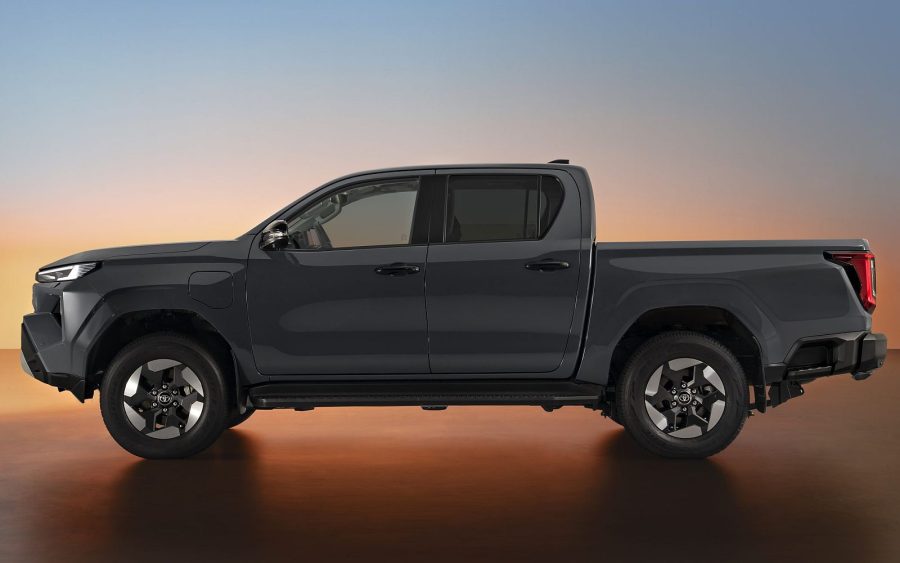
Hilux powertrains: 1) Battery electric
The introduction of battery electric power is a breakthrough innovation for the ‘invincible’ Hilux, and it has been achieved without sacrificing any of the model’s traditional qualities. It retains the fundamental strength of the Hilux’s signature body-on-frame construction and is engineered for off-road performance. This includes specific measures to protect the battery from damage or water ingress. Notably, the wading depth is equal to that of the eighth generation Hilux.
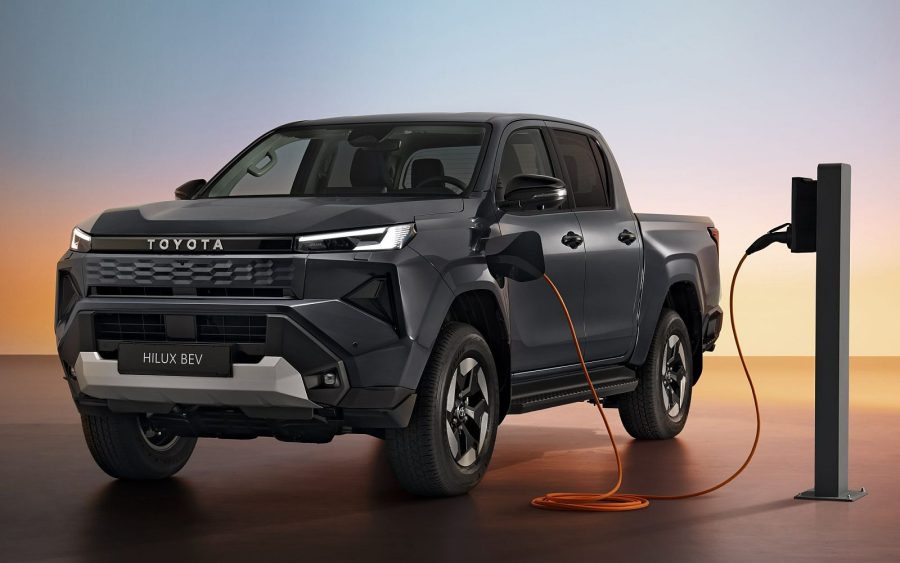
The battery electric Hilux further benefits from a drivetrain programme that adapts vehicle performance to suit different off-road terrains. Using brake and torque control, it is equivalent to driving in L4 (low-range, four-wheel drive) in a conventionally powered vehicle.

The powertrain features a 59.2kWh lithium-ion battery that supplies juice to front and rear e-axles for permanent all-wheel drive. This torque is carefully distributed, with 205Nm generated at the front and 268.6Nm at the rear. Tentative, pre-homologation data indicates that the model will offer a 715kg maximum payload and 1,600kg towing capacity. The WLTP driving range will be approximately 150 miles. Toyota engineers have targeted best-in-class charging capabilities that will minimise vehicle down-time.
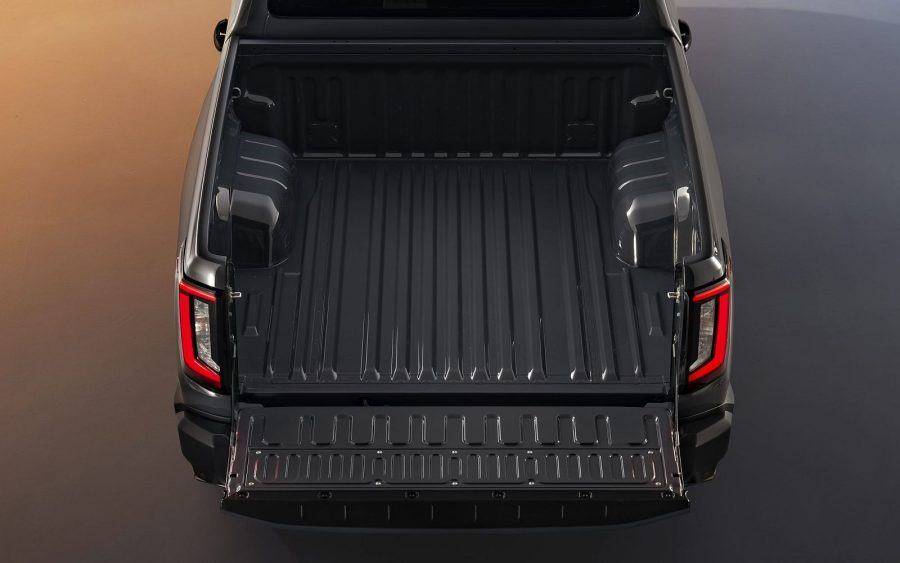
2) Diesel-electric mild hybrid
The 2.8D 48V powertrain was introduced in the current Hilux and Land Cruiser ranges in 2025, and this version is predicted to remain the volume seller in Europe in the all-new ninth generation Hilux. Production of this version will commence in spring 2026.
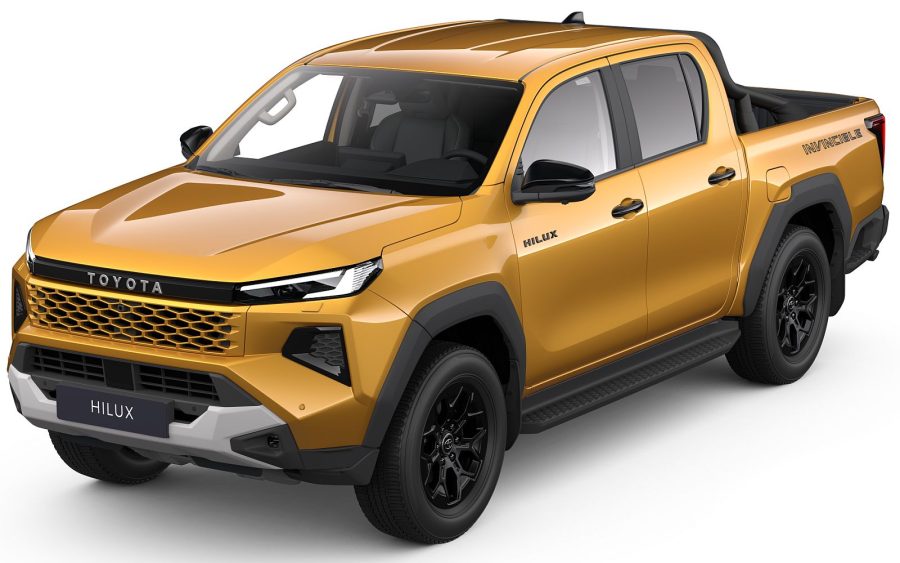
The system comprises a 48V lithium-ion battery – conveniently housed beneath the rear seats so interior space isn’t compromised – an electric motor-generator and a DC-DC converter. This hybrid technology supports the 2.8-litre diesel engine to deliver smooth, quiet and refined performance in both on and off-road driving. The drive quality is particularly noticeable at start-off and under acceleration. What’s more the model’s load-carrying capability is maintained: payloads of up to one tonne can be carried and braked trailers up to 3,500kg can be towed.
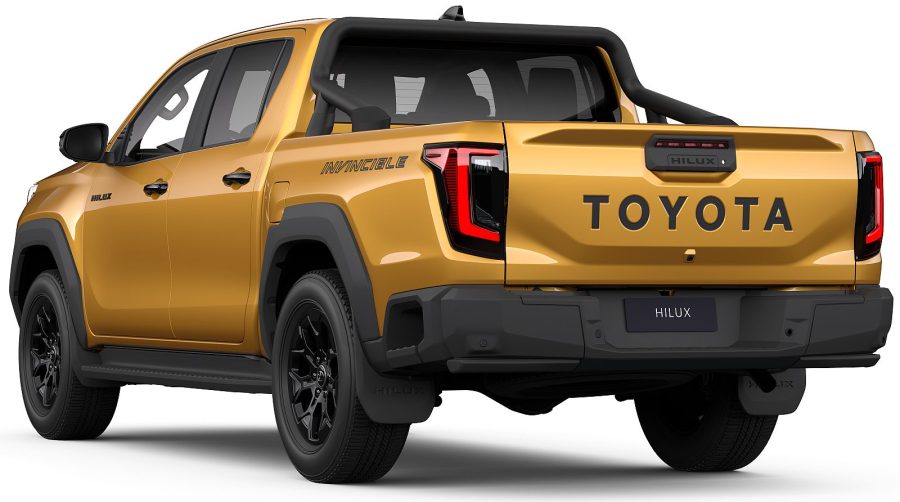
The electrified powertrain components have been designed for simple integration and to withstand harsh operating conditions. Notably, the motor-generator is positioned high up on the engine, so the vehicle retains its 700mm wading capability. Off-road performance is further improved with a multi-terrain programme that adapts the vehicle’s performance to different surfaces. This is assisted by an in-car monitor that will help the driver position the vehicle in challenging conditions. This monitor is also available to support parking and precise on-road manoeuvres.
3) Hydrogen fuel cell
The future promises even more for the ninth generation Hilux with confirmation that a version equipped with a hydrogen fuel cell system is scheduled to arrive in 2028. The fuel cell Hilux will be a further demonstration of our commitment to realising the potential of hydrogen as a valuable source of clean energy. It will add stimulus to a wider roll-out of hydrogen eco-systems and infrastructure in Europe.
Learn more: History of the Toyota Hilux
